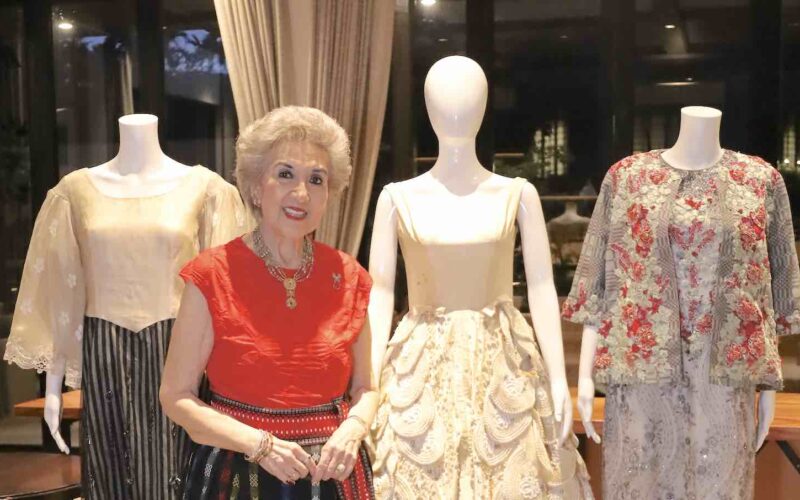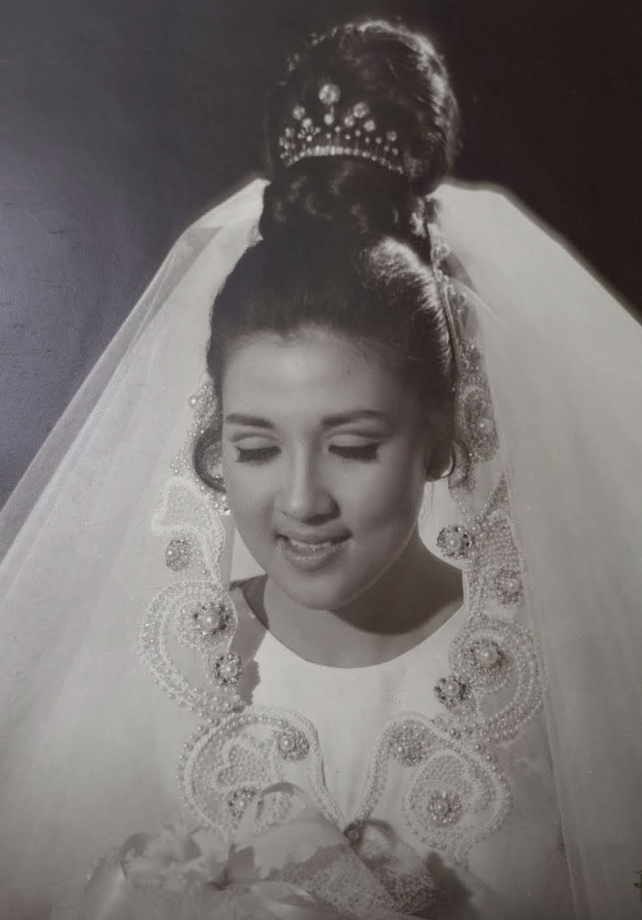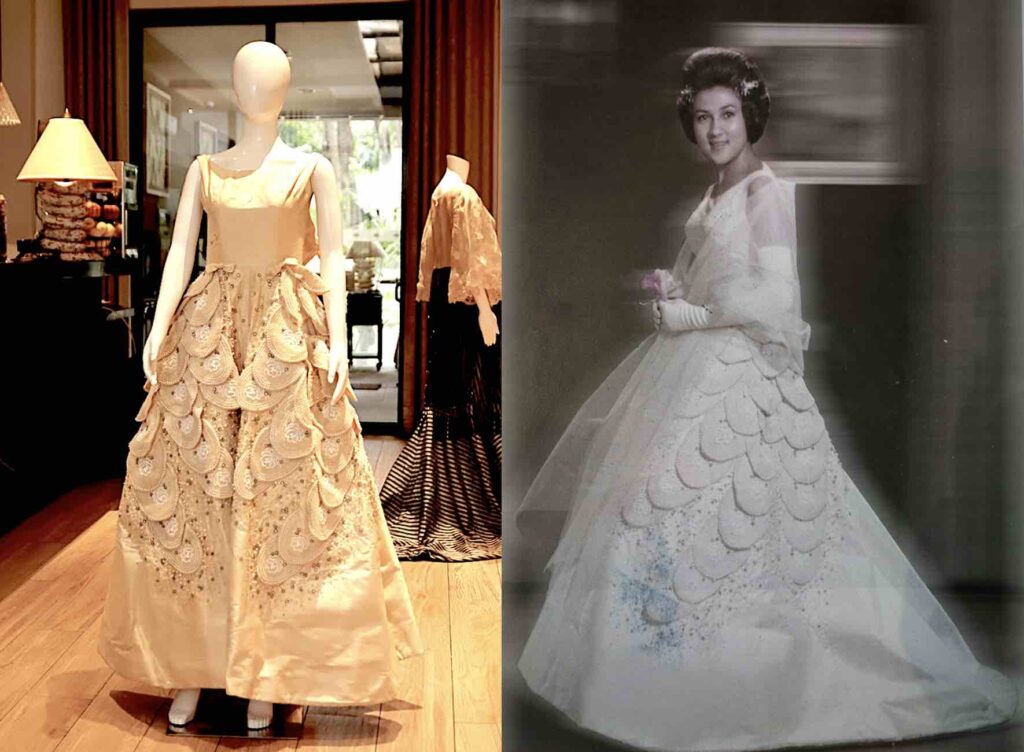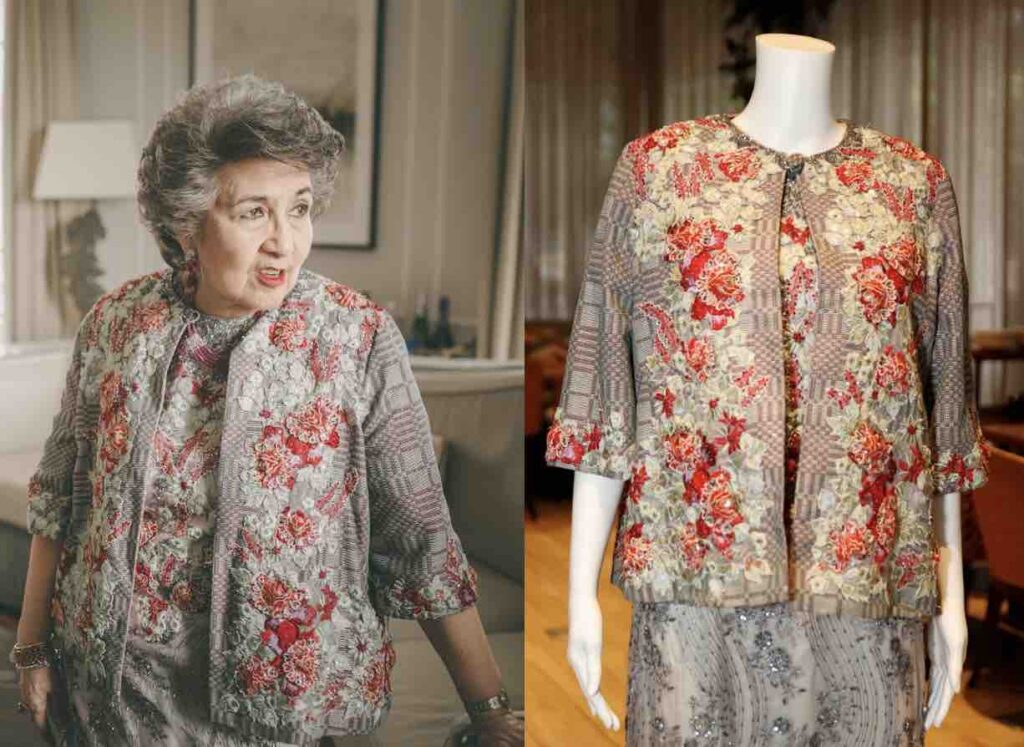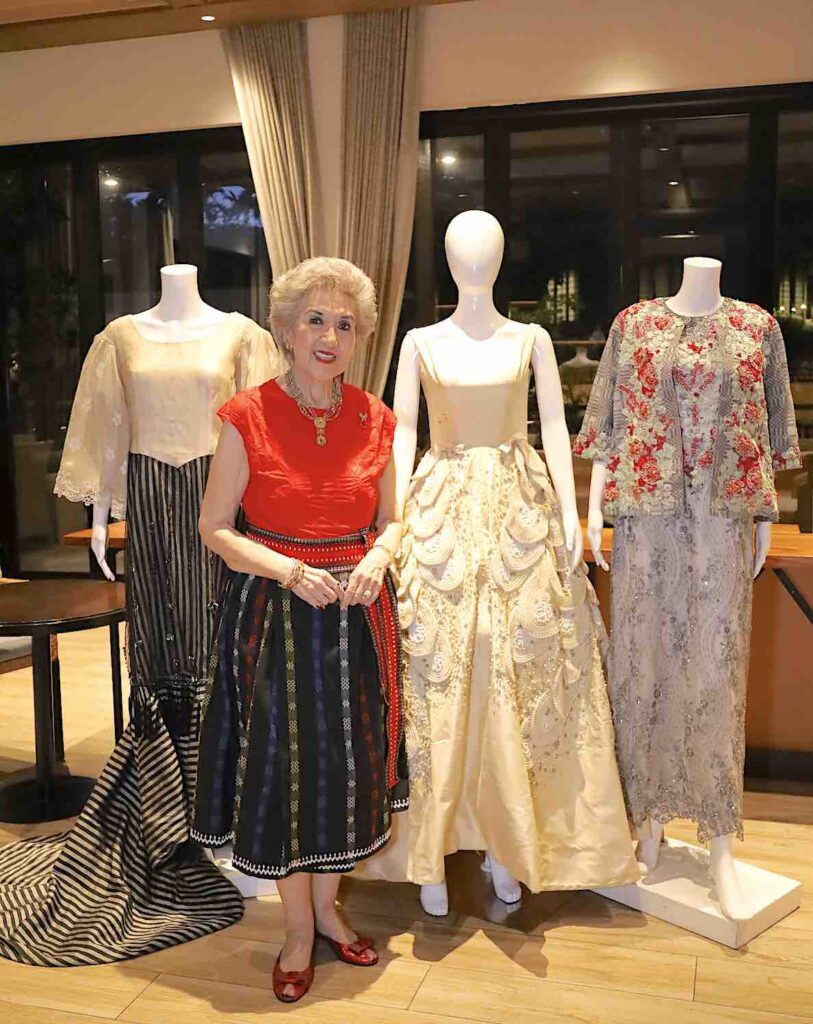The co-founder of ArteFino is set to celebrate her 80th year as a patron of the arts through a retrospective show that captures the beauty of Philippine art and design through the iconic terno.
Set to be staged by Art House from Oct. 24 to 27 at the Southcourt of the Power Plant Mall, Terno: Celebrating a Legacy Forged from Design and Art will bring together eight contemporary artists as they reflect and respond to eight masterful designs that have marked milestones in the life of the accomplished arts and fashion patron.
“It felt more meaningful and purposeful to come up with an exhibit than to throw another party,” reflects the co-founder for ArteFino and Friends of Manansala Foundation. “It was important to have an activity that would tell the story of Philippine art, heritage, and design,” she adds.
Maritess also tells us that the project — and even her journey in the arts, in general — was largely influenced by her mother. “She shaped me and my preferences in fashion. She would keep her clothes in bauls. She never discarded them. When we started to look through her collection, we discovered all these beautiful gowns and dresses. That’s really where it all began,” she elaborates.
Sneak peek
A week before the opening of the exhibit, Maritess gave select members of the press a preview by putting on display three of the dresses that inspired the exhibit. This included a stunning off-white Ramon Valera number, with an 18-inch waistline, mind you.
“For my debut and wedding, I wore Ramon Valera. He was so detailed that I fully trusted him to create something beautiful. For my wedding he even thought of the design for my crown. My husband, Susing, was very supportive in that he let me have full autonomy with regards to whom I wanted to wear for the wedding. For him, it was about giving me the best. And it was no less than Ramon Valera,” recalls Maritess.
She also tells PeopleAsia that while she loved the dress, she dared not suggest or make requests when working with one of the masters of Philippine fashion. “I wouldn’t dare,” she tells us with a chuckle. “When you’re working with these masters you just give them their complete trust.”
And lo and behold, that trust gave birth to something that remains exquisite, even after spending more than a few decades inside a baul.
Pairings that symbolize Philippine identity
The concept of Terno was hatched after poring over Maritess’ extensive archive of gowns by masters of Philippine fashion. Couture creations by Ramon Valera, Steve de Leon and Patis Tesoro served as key inspiration for mounting the art show that will showcase the use of heritage fabrics. Contemporary incarnations of the national dress by BAYO Atelier, Len Cabili, Jor-El Espina, Rajo Laurel and Cora Manimbo were also chosen to represent a creative revolution in everyday Philippine wear. “These gowns or dresses were also chosen because they were a part of my life’s milestones,” adds Maritess.
Design pieces were then paired with contemporary artists from ART HOUSE’s roster. These include 0270501, Enon de Belen, Alvaro Jimenez, Ronna Manansala, Anina Rubio and Melissa Yeung-Yap. Patis Tesoro and Jo Ann Bitagcol were also invited to partake of the creative exercise. Their works as both artist and designer are renowned for their distinctive use of heritage fabrics. For Terno, Patis will showcase never-before-seen studies of her artwork, all done on local fabrics. Jo Ann will apply her signature photo prints on fabrics as a response to Len Cabili’s intricately embroidered dresses
Art House Founder Carlo Pineda explains, “My mom has always been a supporter of Philippine fashion and art. Her journey as a patron of both presented us with a beautiful proposition to blend fashion and art in one space.” Terno honors the national dress as a fundamental part of Philippine identity. But more than that, it also endeavors to tell the story of Philippine creativity and its ecosystem through a new lens. — By Jose Paolo S. dela Cruz

